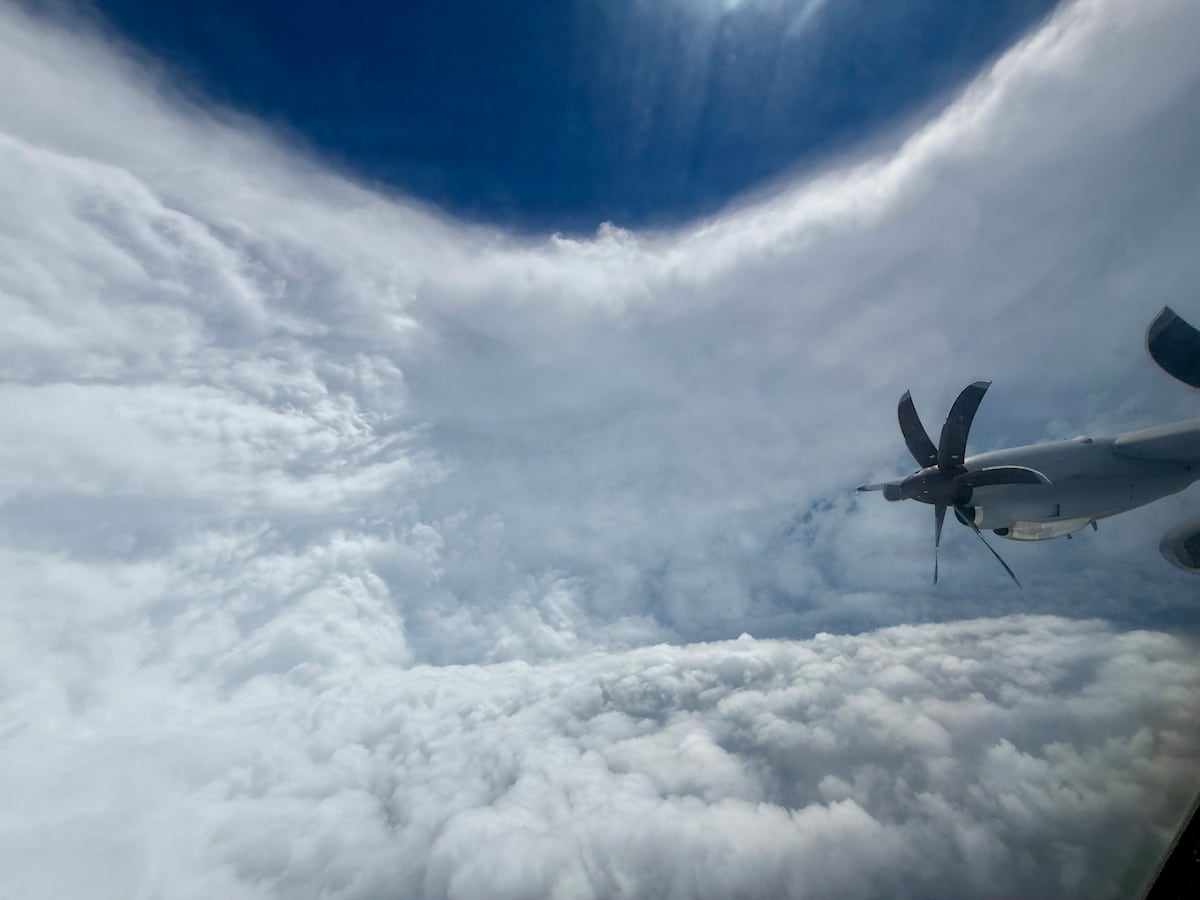The WC-130J Weatherbird was entering the eye of Melissa when it “briefly experienced forces stronger than normal due to turbulence,” the 53rd said in a social media post.
The crew of the plane, whose call sign was TEAL 75, returned to its forward operating location in Curacao, where it will be inspected before resuming flights.
The 53rd said the plane may not have been damaged by the heavy turbulence, but standard safety procedures call for an inspection.
Melissa is a Category 5 hurricane, with sustained winds of up to 185 miles per hour, that made landfall in Jamaica Tuesday afternoon. The National Hurricane Center warned Tuesday the storm is “one of the most powerful hurricane landfalls on record” in the Atlantic, bringing catastrophic winds, flash flooding and storm surges that could decimate the Caribbean nation.
“THIS IS AN EXTREMELY DANGEROUS AND LIFE-THREATENING SITUATION!” the National Hurricane Center warned in a message posted online about 1 p.m., announcing the storm had made landfall.
The curtailed flight Tuesday came one day after another Hurricane Hunter mission into Melissa, during which dramatic photos and video of its inner eye were captured.
The Air Force has 10 WC-130Js as part of its Hurricane Hunters squadron, a reserve unit assigned to the 403rd Wing at Keesler Air Force Base, Mississippi. The squadron is in charge of collecting critical meteorological data on massive storms.
The air crews volunteer to repeatedly fly into the eyes of hurricanes, where they release an instrument called a dropsonde that includes a small parachute, sensors, a microprocessor, a radio transmitter and GPS gear.
As the dropsonde falls, it measures air temperature, the dew point, wind speed and direction within the storm and transmits the data back to the aircraft. The Weatherbird itself also carries other sensors that add to the information collected on the storm.
RELATED
A Weatherbird’s aircrew includes an aerial reconnaissance weather officer who serves as an on-board meteorologist and analyzes data as it comes in. Two pilots, a navigator and a loadmaster make up the rest of the crew.
For the National Hurricane Center, the information collected by Hurricane Hunters is priceless, as it gives scientists the closest possible picture of what is going on inside a storm.
The 53rd’s WC-130s can track storms near the continental United States, as well as Hawaii and the Caribbean. During winter months, when hurricanes are less likely, crews remain busy collecting meteorological data on severe seasonal storms.
Stephen Losey is the air warfare reporter for Defense News. He previously covered leadership and personnel issues at Air Force Times, and the Pentagon, special operations and air warfare at Military.com. He has traveled to the Middle East to cover U.S. Air Force operations.
Read the full article here








